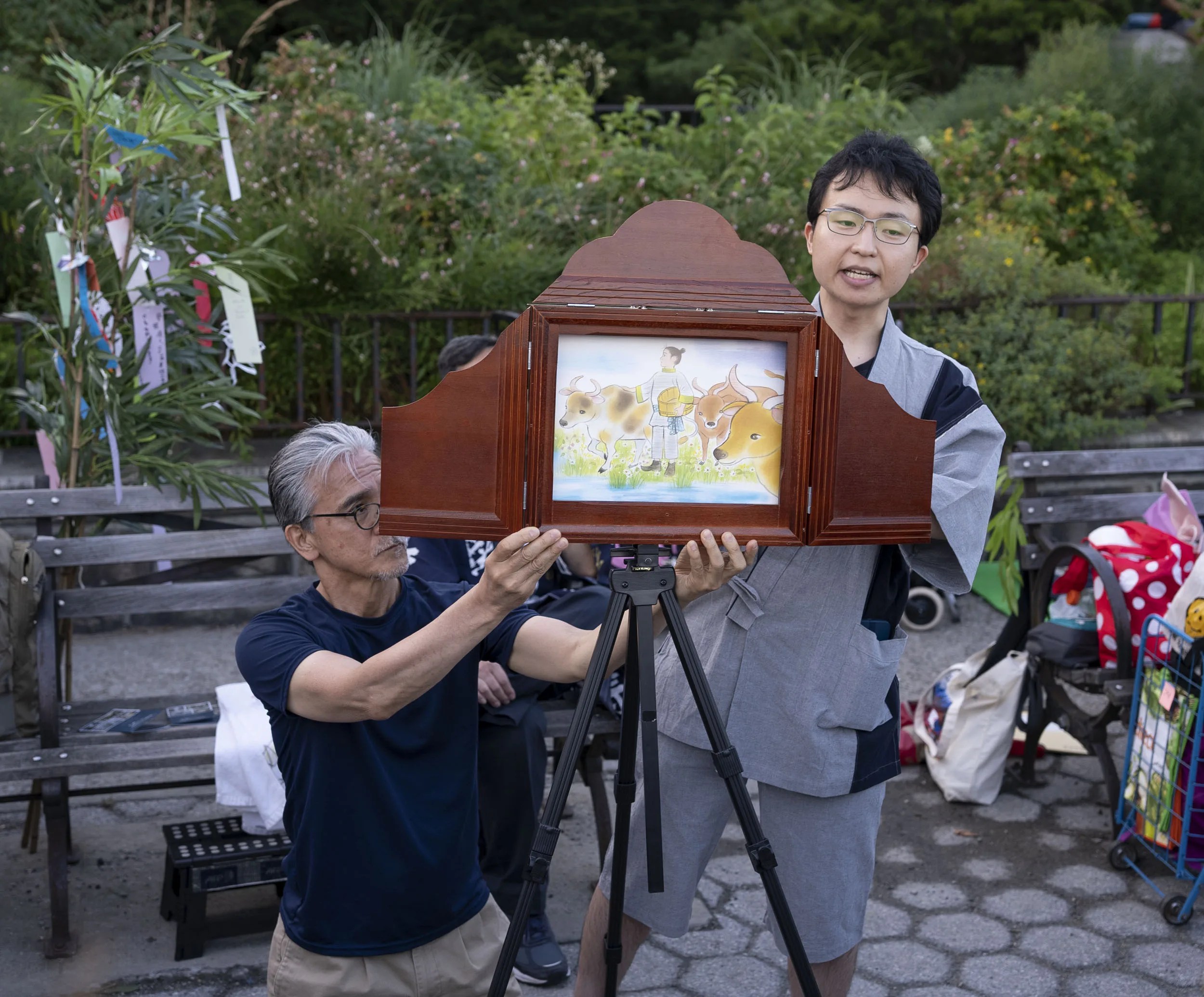2 min read
by Kat Troche of the Astronomical Society of the Pacific
Astronomers this time of year typically hope for clear skies to see the brilliance of the Milky Way. But have you ever heard of star-crossed lovers in the night sky, hoping for the same thing? And you can see them within the Summer Triangle, represented by the stars Vega and Altair, two stars in the Summer Triangle. This is the legend of Tanabata. The Amateur Astronomers Association in New York, NY has a tradition of supporting the festival each year with telescopes.
The Tanabata festival, also known as the "Star Festival," is a traditional Japanese celebration that takes place on July 7th each year. It celebrates the meeting of Princess Orihime and herdsman Hikoboshi, who, according to the tale, are separated by the Milky Way after falling madly in love with each other.

The legend tells that Orihime and Hikoboshi were so in love, that they ceased all work; the princess stopped weaving at her loom, and the herdsman stopped tending to his cows. This infuriated Orihime’s father, the King of the Heavens – those two had work to do! And so, the king forbade the lovers from being together. Heartbroken, Orihime begged him to allow them to stay together. So, a compromise was made: the two star-crossed lovers could meet once a year – on the seventh day of the seventh month – if Orihime returned to her weaving and Hikoboshi resumed looking over his herd.

But what does this have to do with clear skies? Well, on the first anniversary they were to be reunited, Orihime and Hikoboshi found that the river separating them (the Milky Way) was too difficult to cross. But then, a wonderful thing happened: a flock of magpies came and made a bridge for the princess to cross the river, allowing her to spend her one day of the year with her beloved. Tradition states that if it rains on Tanabata, the magpies won’t come, and Orihime and Hikoboshi must wait another year to be reunited. So, we can only hope for clear skies, so that we are able to see Vega and Altair ‘reunite’ across the Milky Way; not just on July 7th, but every evening!
